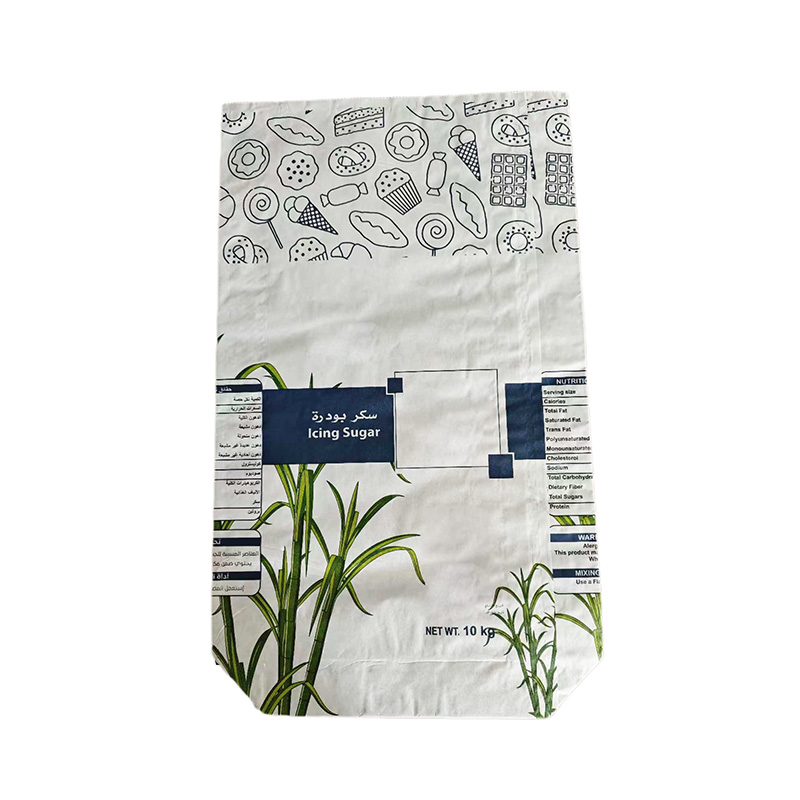Paper and plastic packaging has gained significant attention due to its ability to combine the strengths of both materials. This hybrid approach provides a balance between flexibility, strength, and environmental considerations, making it suitable for multiple industries, including food, chemicals, construction materials, and agriculture.

One notable trend is the increasing use of small woven polypropylene bags in combination with paper and plastic layers. These bags are valued for their tear resistance and flexibility, which help protect contents during storage and transportation. Unlike traditional single-material bags, the integration of woven polypropylene allows for added durability without significantly increasing the overall weight of the package. This feature is particularly important for industries handling bulk powders or granular materials, where the risk of bag rupture can advance to product loss and operational inefficiencies.
The development of the Block Bottom Bag has also contributed to the advancement of composite packaging. Block bottom designs enable bags to stand upright on flat surfaces, improving storage efficiency and facilitating automated filling processes. When combined with paper and plastic materials, these bags offer enhanced stability and protection while maintaining a user-friendly design. The block bottom structure also allows for clear labeling and easy stacking, which is beneficial for both warehouse management and retail presentation.
Innovation in material combinations has been another key driver for paper-plastic composite packaging. Manufacturers are experimenting with different lamination techniques to improve moisture resistance and extend the shelf life of products. For instance, the inner layer of a bag may consist of polyethylene for water resistance, while the outer layer incorporates paper for printability and recyclability. This approach enables packaging that can withstand demanding transportation conditions while remaining visually appealing and environmentally conscious.
Beyond durability and functionality, environmental impact is a major consideration. Many companies are exploring ways to reduce plastic content without compromising bag performance. By integrating paper layers with thin plastic films, packaging designers can maintain strength while increasing the use of renewable materials. Additionally, some designs of small woven polypropylene bags are now compatible with recycling programs, allowing materials to be repurposed at the end of their lifecycle. Such strategies contribute to lowering the environmental footprint of industrial and consumer packaging.
In addition to materials, process innovation is shaping the future of composite packaging. Automated production lines capable of producing Block Bottom Bags with precise dimensions and consistent quality are becoming more common. These systems reduce labor requirements and improve operational efficiency while ensuring that each bag meets specific strength and capacity requirements. The combination of automated production and advanced material technology allows for packaging that meets diverse industry needs without excessive cost.
The versatility of paper and plastic packaging also extends to customization. Companies can choose from a wide range of bag sizes, printing options, and reinforcement methods depending on the product requirements. For example, small woven polypropylene bags may be used for lightweight powders, while larger block bottom versions are suitable for bulk construction materials. This adaptability makes composite packaging a flexible solution for industries ranging from agriculture to industrial chemicals.
Consumer safety and regulatory compliance are also influencing innovations. Packaging must not only protect the product but also meet standards for food safety, chemical resistance, and environmental compliance. The hybrid nature of paper-plastic composite packaging provides the opportunity to address multiple regulatory requirements within a single product. By carefully selecting material layers and production techniques, manufacturers can produce bags that comply with international safety and quality standards.
The advancements in paper and plastic packaging demonstrate how the industry is evolving to meet both operational and environmental challenges. The integration of small woven polypropylene bags and Block Bottom Bag designs reflects a broader trend toward durable, functional, and flexible solutions. These innovations provide industries with packaging options that balance strength, sustainability, and usability, helping companies transport and store products efficiently while responding to growing environmental considerations. As materials and technologies continue to develop, paper-plastic composite packaging is likely to play an increasingly important role across diverse sectors, offering solutions that are practical, adaptable, and conscious of environmental impact.


 English
English Español
Español عربى
عربى
